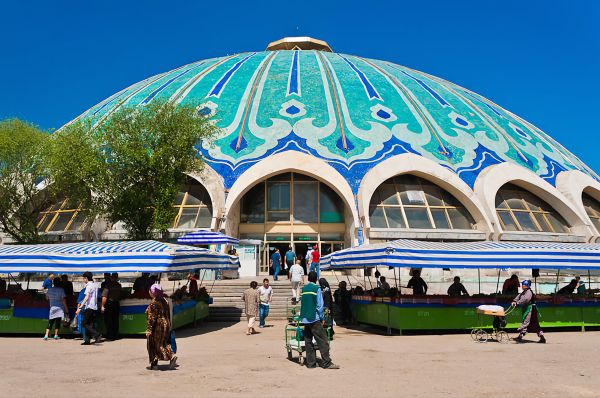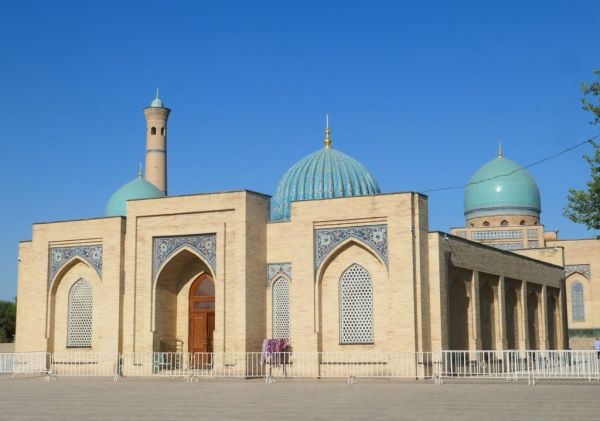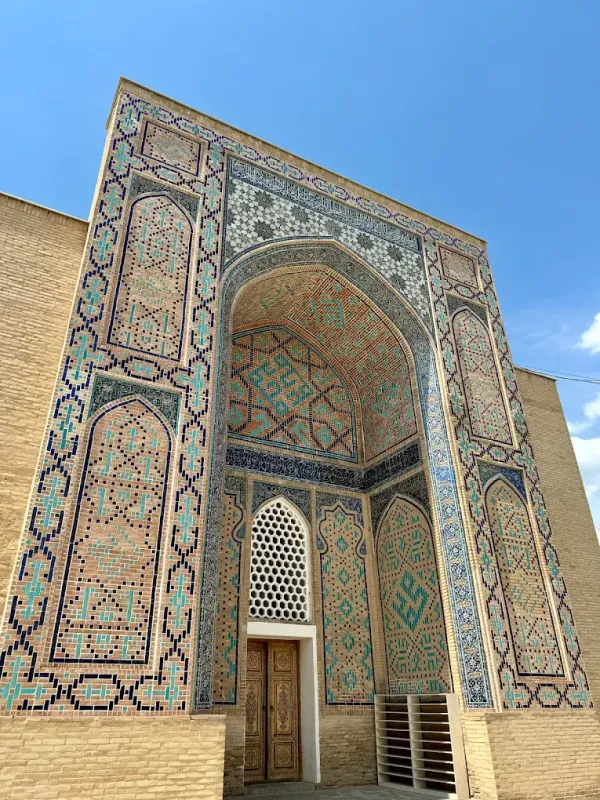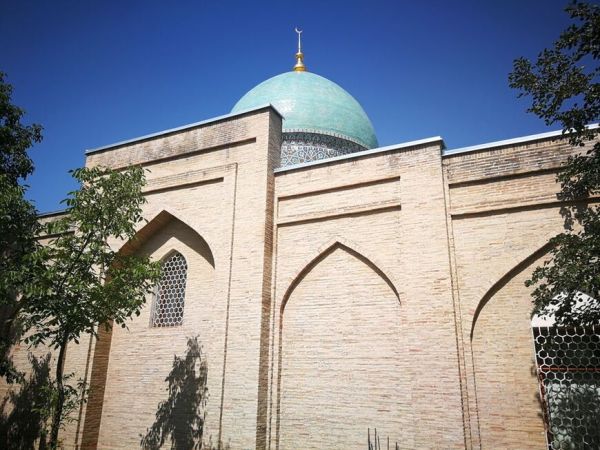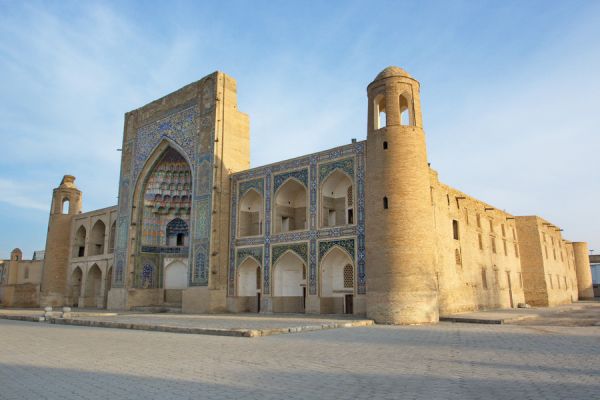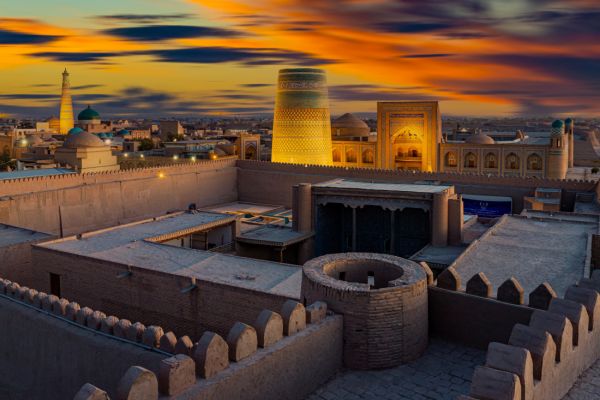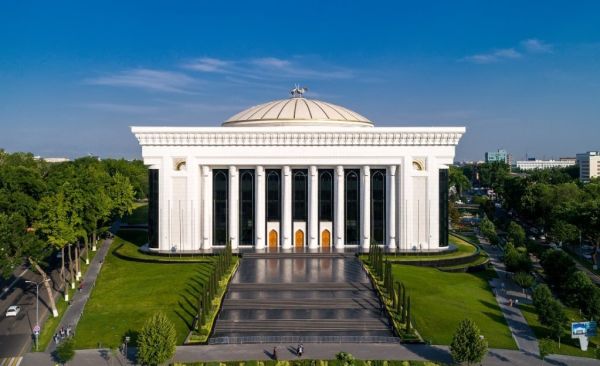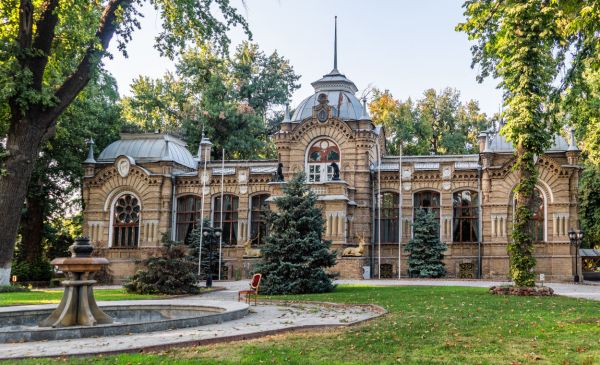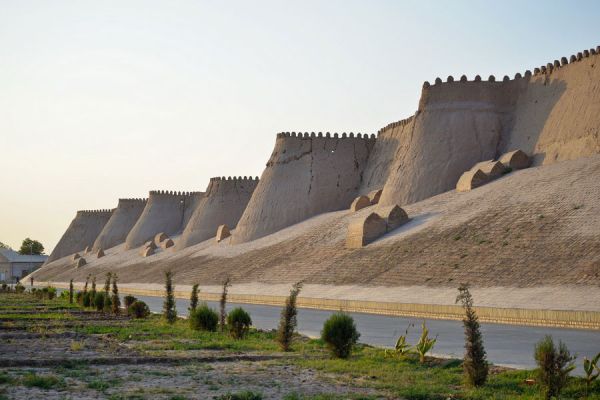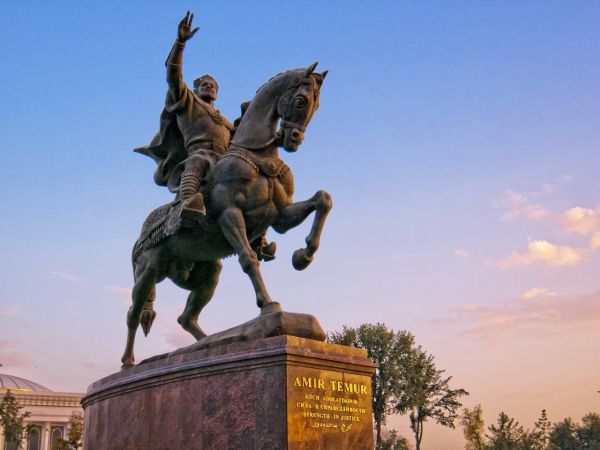Kaffal Shashi Mausoleum
Al-Kaffal al-Shashi was born in the year 291 AH (903/904) (1,2,3,4,9) in the city of Ash-Shash (modern Tashkent). The family of his father, Master Ali, was devout. The grandfather of the future luminary of Muslim science was named Ismail, after the firstborn of the Prophet Ibrahim (Abraham). His father was named after the fourth righteous Caliph Ali, a companion of the Prophet Muhammad (SAW). That's why Abu Bakr was given a personal name ("alam") at birth. the name of the first righteous Caliph Abu Bakr, a companion of the Prophet.
Then the professional prefix (lacab) Kaffal will be added to the name – "Lockmaker", according to the craft of their family (1,16). The Arabic word "kufl" was transformed into "kulf" and still lives in modern Uzbek, retaining its meaning – "castle". Later, Abu Bakr would be called by the epithet (nisbah) ash-Shashi ("Tashkent") and for his wise holiness "Hazrati Imam" – "Holy Imam".
A few centuries later, the prefix al-Kabir, "The Elder," would be added to the manuscripts, so as not to be confused with Al–Kaffal Abu Bakr Abdullah ibn Ahmad al-Marwazi, also an expert in Muslim law, who was born in Merv 400 years later and was the namesake of the Tashkent saint. Al-Marwazi will be referred to as Al-Kaffal Abu Bakr "Saghir" – "The Younger" (1,2).
So the name, which is difficult at first glance, reads simply – Abu Bakr Muhammad "The Elder", the son of Ali, the grandson of Ismail, a master of castles from Tashkent, a brave poet, polyglot and author of many books on Muslim law, which are still being republished today.
The Arab caliphate of Shash Tashkent became part of the 9th century (7). It was then that Caliph Muhammad al-Mutasim Billah, the youngest son of the legendary Caliph Harun ar-Rashid, allocated two million dirhams to the city for irrigation needs (7), ordering the excavation of an irrigation canal. Mutasim probably treated our region this way because his grandmother was from Sogda (8). Or perhaps because, as a young man, Mutasim recruited his own army of several thousand sabers exclusively from Turks. A disciplined and dedicated army. After becoming Caliph, Mu'tasim brought the number of Turks in the army to seventy thousand people.[8] And there were probably people from Shasha in the army. Thus, thanks to Caliph Mutasim, the Bozsu–Kalkaus water system was improved, which we promise to return to at the very end of the story.
The ninth and tenth century Shash occupied the northwestern part of modern Tashkent. The center of the city was the space between the current Chorsu, Eski-Zhuva and Navoi Street(7). By the time of the formation of the young Caffal, the city's economy was developing rapidly, and it was here that their castle workshop was located, in which he learned the secrets of craftsmanship. The young man from the family of a lockmaker has always been known for his thirst for learning new things. He soon mastered the skills of his father, an educated man, and became addicted to reading himself, and as is still the case among Eastern youth, he composed his first poems.
The period of the IX-XII centuries is called the present time of the Eastern Renaissance. At that time, the prestige of knowledge was as high as ever. In the medieval East, education was considered a religious obligation and played the role of modern "social elevators." There are many examples in history of how young men from poor families, having successfully graduated from madrasahs, became religious and cultural leaders. Following the hadith "Learn science from the cradle to the grave," most madrasah graduates continued their individual studies under the guidance of one or another scientist. As in modern science, at that time there was also a specialization in the branches of sciences: someone was polishing knowledge of the grammar of the Arabic language, another was an expert in Muslim law. Improving their knowledge, young people who comprehend science moved from one scientist to another. This could have lasted for ten years or more (6, 17).
Abu Bakr Muhammad Kaffal Shashi, having learned science, went to continue his education in Khorasan, and then to the center of science of the Muslim world Baghdad. Abu Bakr visited the holy cities of Mecca and Medina and completed his studies in Damascus. Among his teachers were experts in hadith and scholars in the field of Muslim law, Imam Abu Bakr Ibn Khuzayma and Abu al-Qasim al-Baghawi(2).
Contemporaries testify that intellectual and theoretical training was developed in medieval madrassas. Theology, jurisprudence, traditions about the deeds and sayings of the Prophet (hadith), the interpretation of the Quran (tafsir), Arabic grammar and syntax, the life of the Prophet (Sira), as well as exact and applied sciences were deeply studied. An advanced organization of religious and secular education for that time spread throughout the Islamic world (6, 17).
And arriving in Baghdad, the capital of the caliphate, Al-Kaffal learns from Imam Abu Jafar Muhammad ibn Jarir al-Tabari (1,2) (839-923), a famous Islamic historian and theologian of that time, author of the book "Stories of Prophets and Kings", tafsir of the Koran and works on Islamic jurisprudence. Al-Tabari lived for 84 years and died in Baghdad when Al-Kaffal was 19 years old. Imagine now at what a young age he left his hometown!
Many sources say that for scholars of the Muslim Renaissance, it is often inherent to exist on the border between spiritual and artistic culture. Forms of verbal creativity were widely used in the sacred books, and knowledge itself was often clothed in artistic forms. Many scientists and statesmen of that time were poets: Abu Ali ibn Sina, Ali Kushchi, Alisher Navoi, Ahmad Yugnaki, Zahiriddin Muhammad Babur, Mirzo Ulugbek, Omar Khayyam, Yusuf Has Hadjib and many, many others. Or would it be more accurate to say that many poets were scientists and statesmen? It is no coincidence that Tajeddin Abdul Wahhab Al-Subbahi said of Al-Kaffal al-Shashi: "He wrote incredibly skillful poems and songs"(2).
Having devoted many years to improving his knowledge, Abu Bakr al-Kaffal al-Shashi becomes one of the leading representatives of the Shafi'i Madhhab school of Law(1), and becomes widely known for his erudition in many scientific disciplines. He gains indisputable authority due to his knowledge of Muslim law: observance of Muslim rituals, morality and social behavior.
The great masters of law and hadith call themselves the disciples of Al-Kaffal al-Shashi. The most famous of them are the authors of theological books Abu Abdullah al–Hakim, Abu Abdullah ibn Mandah and Hakim Abu Abdullah ibn al-Bayi; the famous Sufi scholar Abu Abdarahman as-Sulami; jurist Abu Abdullah al-Halimi, Abu Nasr ibn Qatada, Abu al-Qasim Omar Ibn Muhammad Ibn Ahmad Ibn Ikrimah, nicknamed al-Jazari and better known as Ibn al-Bazri(2) and Abul Qasim Abdarahman ibn Muhammad ibn Ahmad al-Furan al-Furani(1).
